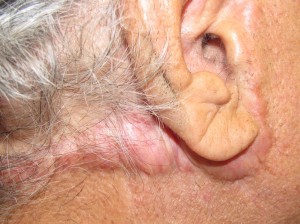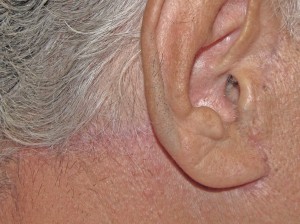Scars are the result of the body’s healing process following penetrating injuries through the skin. These can be the consequences of trauma, such as of a dog bite or a car accident, or from an elective surgical procedure such as a facelift or tummy tuck. Because incisions used for surgery are planned and the circumstances are controlled, the scars that result should be superior to those occurring as a consequence of trauma. Nevertheless, even though some scars can be virtually invisible or largely inconspicuous, they never completely go away.
The healing of wounds and the ultimate scar are influenced by a multitude of factors. Some of these include genetics, nutrition, smoking, surgical technique, post-injury care, sun exposure, medical problems such as diabetes and even BMI (body mass index).
Surgical technique comprises multiple issues including the skill, training and meticulousness of the surgeon. These can also be modified by knowledge, effort and motivation. So, for the best possible result, you want the person most well trained and experienced in order to put the odds in your favor. (See also: Buyer Beware When It Comes to Selecting A Doctor to Perform Your Plastic Surgery.)
And what kind of doctor would that be?
A board certified plastic surgeon, of course!
Realize, though, that using a reputable plastic surgeon does not necessarily guarantee an outcome. That’s because in all professions and even in activities in life, some people are more talented and skillful than others. However, by selecting a plastic surgeon, an individual who is uniquely and thoroughly trained in areas such as surgical technique, wound healing and scar treatment, you provide yourself with the greatest possible chance of obtaining the desired result.
The following patient (photo A) consulted with me for scar revision in an attempt to improve the quite obvious and severe hypertrophic facial and neck scars he ended up with after having undergone a facelift performed by a (non-reputable) surgeon south of the border – in order to save money (see: Don’t Seek Plastic Surgery South Of The Border ).
He surely didn’t save money but did have a lot of free stress and aggravation!
I performed a scar revision on him that involved excising the scar (cutting it out), meticulously repairing the resulting wound and injecting the area with a low dose of steroid medication. Postoperatively, he had close follow-up and scar treatment in order to maximize the aesthetic outcome (photo B).
As you might expect, he was extremely grateful for the cosmetic outcome – an essentially inconspicuous scar (which he should have had following his initial procedure performed elsewhere if things were done more appropriately).
If you would like further information on scars and scar revision or for any other plastic surgery procedure that I perform, please call my office at 480-451-3000.
Steven H. Turkeltaub, M.D. P.C.
Scottsdale and Phoenix, Arizona


